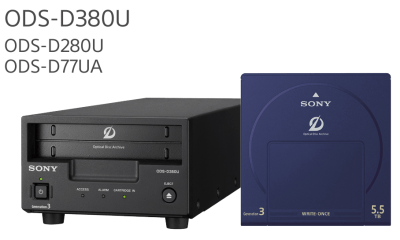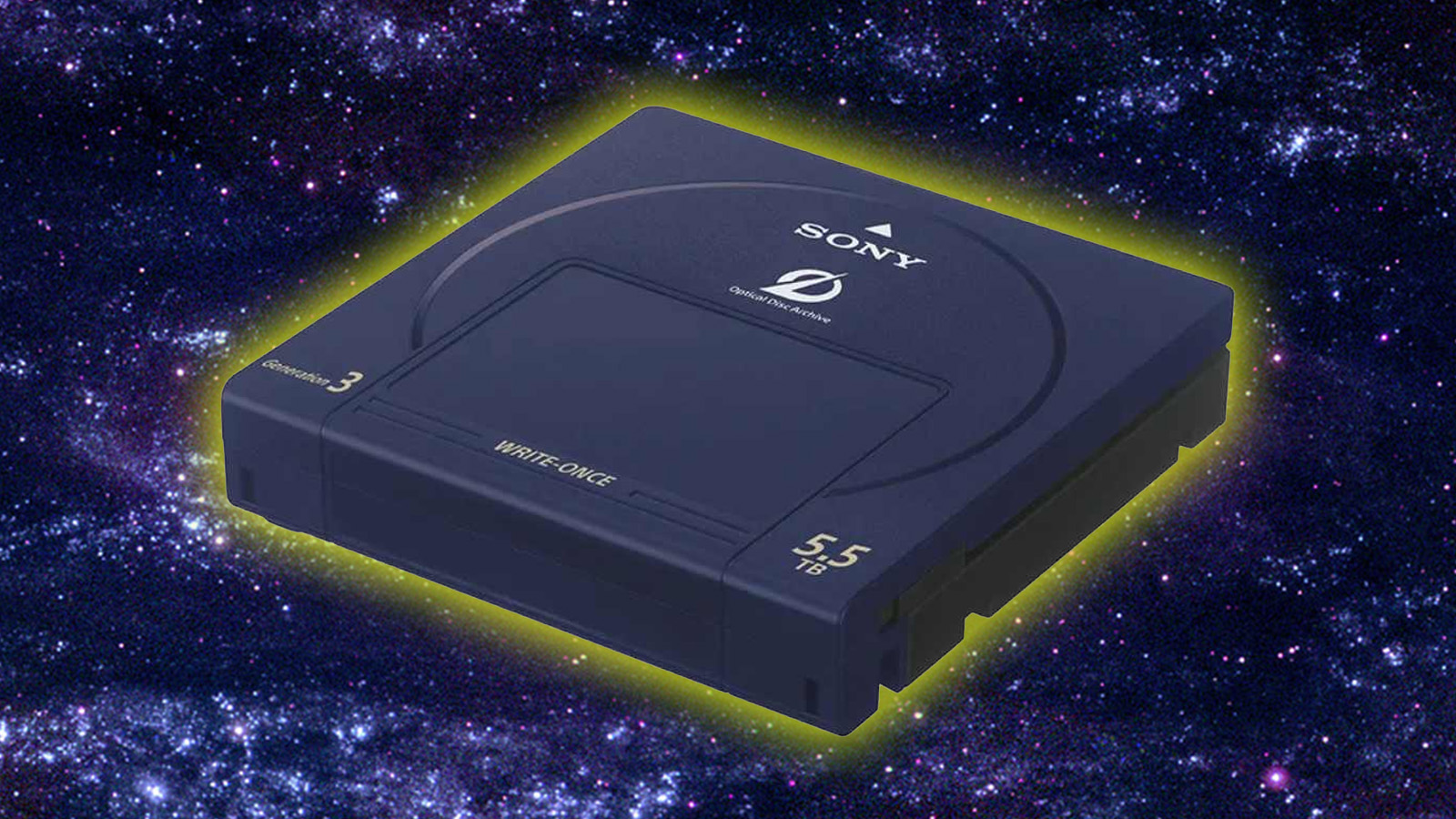You consider yourself a power user. You’ve got lots of files, and damn it, you like to keep them backed up. Around a decade ago, you gave up on burning optical discs, and switched to storing your files on portable hard drives. One local, one off-site, and a cloud backup just to be sure. You’re diligent for a home gamer, and that gets you done.
The above paragraph could describe any number of Hackaday readers, but what of bigger operations? Universities, businesses, and research institutions all have data budgets far in excess of what the individual could even imagine. What might shock you is that some of them are relying on optical media—just not the kind you’ve ever heard of before. Enter Sony’s Optical Disc Archive.
Not A DVD

Historically, tape has been a very popular backup medium as it provides a great deal of storage at a low price. In these applications, the linear nature of tape and the resulting slow seek speeds don’t really matter. However , tape has another problem—that of longevity. Plastic tapes covered in magnetic particles just aren’t that hardy when you start talking about timespans measured in decades or more. To that end, Sony wanted to develop a more durable archival and backup solution as an adjunct to its popular Linear Open Tape storage systems.

The result was the Optical Disc Archive, an optical component of Sony’s broader PetaSite data archive system. It’s considered an ideal solution for storing large amounts of media for long periods of time. Sony cites broadcaster archives as a prime use case, where it’s desirable to store footage for easy access for many decades. The fast seek time of the optical media allows for its use as an online or nearline archive, something which tape doesn’t do anywhere near as well.
Released in 2012, it drew from BluRay technology, using the same 405 nm lasers to burn data on to write-once discs. Generation one cartridges held 12 single-sided optical discs and could store up to 1.5 terabytes per cart, with read speeds of up to 137.5 MB/s. Smaller carts were available with capacities as low as 300 GB, and some early media was rewritable.
By generation three, released in 2019, Sony had pushed storage up to 5.5 terabytes and speeds up to 375 MB/s, using 11 discs per cartridge with three layers on each side. The current generation technology comes in at 500GB per individual disc. From generation two media onwards, all media was write once.

While desktop drives are available, it’s not the typical use case. Discs are typically stored en masse in large stacker units that combine one or more drives and many storage cartridges. One typically starts with a master library unit, to which one can add up to to five expansion units each holding more drives and cartridges. The units contain robotics to load and unload cartridges in the available drives. It’s possible to create a 42U rack untit that stores 535 cartridges with one drive and a total of 2.94 petabytes, according to Sony. Alternatively, if you wanted more drives and less carts, you could build a similar sized rack to store 375 carts and four drives for up to 2.06 petabytes instead.
Using the optical format has multiple benefits to longevity. The discs are read without any sort of friction which can wear away the media, quite unlike tapes which make contact with the reader head. The polycarbonate media is also resistant to water, dust, changes in humidity and temperature, and electromagnetic radiation, within reason. Sony claims a media life of 100-years-plus—this has obviously gone untested in real time. There’s also the in-built benefit of using write-once media—this makes the discs themselves essentially immune to viruses, intentional erasure, ransomware, or cyber attacks—outside of some edge case where a hacker figures out how to overspeed the drives and destroy the discs. Don’t hold your breath.

All this sounds wonderful, right? There’s just the sad note that this wonderous optical technology is already on the way out. Click around Sony’s website, and you’ll find that most of the Optical Disc Archive hardware has been discontinued. Indeed, when Sony announced it was cutting production of writable optical media, we took notice—mostly thinking about CD-Rs, DVD-Rs, and BD-Rs. But an additional consequence was that it would end the production of Optical Disc Archive carts as well, and with no new media, there’d be no need for new drives, either. As to why, the answer was simple—money. As reported by TechRadar:
“The growth of the cold storage market has not reached our expectations, and the performance of the storage media business as a whole continues to be in the red,” a Sony Group spokesperson said. “We have determined that it is necessary to review the business structure to improve profitability.”
Ultimately, Sony built a very cool, very capable optical archival system. It was capable of storing large amounts of data at a reasonable cost, and doing so for many decades at a time. The only real problem was that the market wasn’t able to support it, or Sony couldn’t figure out the business model—take your pick. In any case, consider this the coolest optical media format you’ve never heard of, and probably never will again. Vale.
